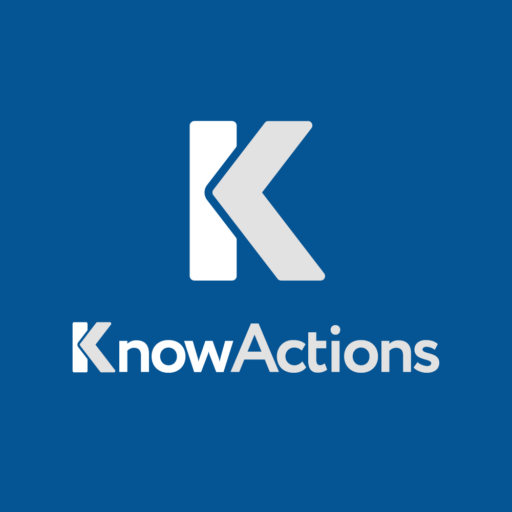Did you know that organizations can save up to $100 million annually by cutting inefficient meetings? This figure underscores the pressing need for businesses to overhaul their collaboration strategies. In today’s fast-paced work environment, enhancing team collaboration while minimizing meeting time has become a critical challenge for companies of all sizes.
As teams have expanded from 20 members to 100 or more, traditional team practices have become less effective in fostering collaboration1. This expansion has led to a startling statistic: 75% of cross-functional teams were found to be dysfunctional in 2015, according to Harvard Business Review2. The impact of poor collaboration is significant, with the average team wasting 20 hours per month due to ineffective collaborative efforts2.
To address these challenges, organizations are embracing virtual collaboration tools and innovative communication strategies. Platforms like Slack have revolutionized teamwork by streamlining collaboration and reducing the need for meetings. By focusing on the “three D’s” – discuss, debate, and decide – teams can make more efficient use of their time and resources.
Successful collaborative teams rely on values such as clarity, efficiency, positivity, trust, and accountability3. By implementing these principles and leveraging asynchronous communication tools, organizations can significantly improve their productivity and reduce the financial impact of ineffective collaboration. For instance, a 200-employee team can lose $1.5 million annually due to siloed communication and ineffective cross-team collaboration2.
Key Takeaways
- Inefficient meetings cost organizations millions annually
- Large teams face unique collaboration challenges
- Virtual collaboration tools can reduce meeting time
- Clear communication and trust are essential for teamwork
- Asynchronous methods can enhance productivity
- Effective collaboration leads to significant cost savings
The Impact of Excessive Meetings on Productivity
Meetings can be both beneficial and detrimental in the workplace. They aim to improve collaboration and team dynamics but often lead to decreased productivity and employee burnout. Recent studies highlight the alarming trends surrounding unproductive meetings.
Quantifying Time Lost in Unproductive Meetings
Meetings have become a significant burden for many. A staggering 4 out of 5 workers find it challenging to complete their tasks due to the frequency of meetings4. Moreover, over half of employees leave meetings without a clear understanding of what actions to take next4. This often leads to a cycle of additional meetings, with 77% of workers experiencing this pattern4.
Effects on Employee Morale and Burnout
The impact of excessive meetings goes beyond just lost time. Half of the workforce often works overtime to make up for the time spent in meetings4. This encroachment on personal time can result in burnout and decreased job satisfaction. In fact, 92% of employees view meetings as unproductive, reflecting widespread frustration5.
Disruption of Deep Work and Creative Processes
Meetings disrupt deep work and creativity significantly. It takes an average of 20 minutes for an employee to refocus after an interruption, such as a meeting5. This disruption is particularly challenging for managers, with 64% reporting that excessive meetings prevent them from engaging in deep thought5.
Interestingly, reducing meetings can lead to positive outcomes. A 40% reduction in meetings resulted in a 71% increase in productivity, while a 60% decrease led to a 55% boost in collaboration5. These findings suggest that fewer, more focused meetings can improve productivity and team dynamics.
Identifying and Eliminating Unnecessary Meetings
In today’s fast-paced work environment, meetings can quickly become a productivity drain. On average, professionals spend about 31 hours per month in unproductive meetings6. This staggering statistic highlights the urgent need for organizations to identify and eliminate unnecessary gatherings.
Cross-functional teams often fall victim to meeting overload, with 40% of managers now spending more than 15 hours weekly in meetings, up from 25% in 20206. To combat this trend, companies must evaluate each meeting’s purpose and explore alternative communication methods.
Agile methodologies offer a solution to streamline communication. By implementing focus time, such as Slack’s successful “Focus Fridays,” teams can cancel internal meetings for a day, encouraging uninterrupted work7. This approach can lead to significant productivity gains, with enterprises potentially saving up to $100 million annually by eliminating inefficient meetings7.
To identify unnecessary meetings, consider these steps:
- Assess meeting objectives and explore alternative methods
- Encourage team members to question meeting necessity
- Use company analytics to gain insights into meeting patterns
- Establish clear guidelines for calling meetings
- Promote a culture where meetings are one of many communication tools
By implementing these strategies, organizations can create a more efficient work environment. Remember, 70% of meetings create barriers to completing tasks7. By reducing unnecessary gatherings, teams can focus on deep work and drive productivity.
| Meeting Reduction Strategy | Potential Impact |
|---|---|
| Focus Fridays | Increased uninterrupted work time |
| Maker Weeks | More time for significant projects |
| Clear Meeting Guidelines | Reduced unnecessary attendees |
| Asynchronous Communication | Improved productivity and focus |
By embracing these strategies and leveraging agile methodologies, cross-functional teams can significantly reduce meeting time while enhancing collaboration and productivity.
Leveraging Asynchronous Communication Tools
In today’s workplace, Virtual Collaboration Tools are essential for boosting team productivity. Asynchronous communication methods bring numerous benefits, especially for remote teams facing time zone and availability hurdles8.
Utilizing Collaborative Platforms
Tools like Slack and Microsoft Teams facilitate rapid, effective communication, bypassing the need for lengthy meetings. They enable team members to exchange updates and collaborate flexibly, regardless of time zones, thus maintaining productivity8. For instance, Dive, an asynchronous video call platform, enhances remote interactions with features such as video updates and note-taking, thereby refining project workflows8.

Effective Use of Email
Email remains a potent tool for detailed or formal communication. It ensures a record of communication and allows recipients to reply at their convenience, promoting a more adaptable work environment.
Implementing Project Management Software
Software such as Asana and Trello facilitates asynchronous collaboration, aiding teams in assigning tasks, setting deadlines, and monitoring progress within a unified platform8. These tools simplify workflows and diminish the reliance on constant meetings. For example, Linear, a project management solution for developers, emphasizes clear communication and task oversight for software development teams8.
The advantages of asynchronous communication are profound. A global software company’s case study revealed that users of an asynchronous communication platform enjoyed meetings averaging just 9 minutes, a stark contrast to over 30 minutes for traditional synchronous meetings9. Organizations utilizing these tools have seen marked improvements in productivity, output quality, and work-life balance for their teams9.
Enhancing Team Collaboration Through Alternative Methods
Teams with robust collaboration outperform those lacking it, underscoring the importance of effective teamwork for success10. To elevate collaboration and diminish meeting time, organizations can embrace alternative strategies that promote teamwork and productivity.
Replacing regular status updates with concise, focused check-ins is an effective tactic. These digital updates via collaboration tools enable team members to share progress efficiently, avoiding lengthy meetings. This approach respects individual work styles and caters to diverse communication preferences.
Emotional Intelligence is pivotal in enhancing team collaboration. Teams that excel in collaboration share knowledge, support each other’s growth, and hold themselves accountable for collective success10. By cultivating emotional intelligence, team members can better understand and address each other’s needs, leading to more effective interactions.
Implementing Feedback Mechanisms
Feedback Mechanisms are crucial for ongoing improvement. Establishing channels for anonymous feedback or suggestion boxes enables team members to express opinions and concerns comfortably10. This fosters open communication and allows for swift issue resolution, averting conflicts that could impede collaboration.
“Collaboration has been linked to the generation of creative and innovative solutions.”
To further enhance collaboration, consider these strategies:
- Establish clear communication channels
- Set clear goals and expectations
- Foster virtual team bonding
- Embrace virtual collaboration tools
Adopting these strategies can significantly boost remote team success and foster effective collaboration11. Studies indicate that remote teams can achieve higher productivity levels due to reduced distractions and tailored work environments11.
| Collaboration Factor | Impact on Performance |
|---|---|
| High Collaboration | 5x more high-performing |
| Employee Recognition | 83.6% increased motivation |
| Frequent Recognition | 75% higher productivity |
By adopting these alternative methods and focusing on emotional intelligence and feedback mechanisms, teams can enhance collaboration while reducing the need for excessive meetings. This strategy results in more efficient, productive, and content teams.
Implementing a ‘Less Meetings’ Culture in Your Organization
Creating a culture that values focused work time is essential for boosting productivity and enhancing employee satisfaction. By cutting down on unnecessary meetings, organizations can improve collaboration and efficiency.
Leading by Example: Management’s Role in Reducing Meetings
Leadership is key in molding an organization’s culture. Managers should lead by being choosy about who attends meetings and showing how to work efficiently. This sets the tone for the company, encouraging teams to value productive work over meeting overload.
Educating Employees on the Value of Focused Work Time
Organizations can host workshops and share best practices to teach employees about the merits of uninterrupted work periods. These Team Building Activities underscore how fewer meetings mean more productivity and job happiness12.
Establishing Clear Policies for Meeting Frequency and Duration
Setting policies on meeting frequency and length can greatly boost productivity. Think about starting no-meeting days or setting aside specific times for focused work. These Communication Strategies ensure teams work well together while valuing each person’s work time13.
| Policy | Description | Benefits |
|---|---|---|
| No-Meeting Wednesdays | One day per week dedicated to focused work | Increased productivity, reduced interruptions |
| 30-Minute Meeting Cap | Limit meetings to 30 minutes by default | Improved efficiency, better time management |
| Agenda-Only Meetings | Require clear agendas for all meetings | Enhanced focus, reduced unnecessary discussions |
By adopting these strategies, organizations can build a culture that prioritizes productive work and effective collaboration. This leads to better teamwork, higher job satisfaction, and superior performance12.
Maximizing Efficiency in Necessary Meetings

Effective meetings are vital for team success. They enhance productivity by fostering communication and knowledge sharing. This leads to better problem-solving and decision-making14. To boost efficiency, start by establishing clear agendas and distributing them beforehand. This ensures everyone knows the discussion topics, goals, and time frames, leading to more focused meetings14.
Cross-functional teams can thrive with shorter meetings, like 15 or 30 minutes, promoting efficiency. Time management is key for productive meetings. Establish clear start and end times, steer clear of unnecessary detours, and respect everyone’s time to keep meetings efficient14. This method is in line with Agile Methodologies, which value quick, focused interactions.
Encourage active participation and teamwork in meetings. It’s vital for tapping into the team’s collective intelligence and discovering innovative solutions14. Consider adopting Amazon’s two-pizza rule to keep meetings small and focused. This approach helps address the fact that global employees spend 60% of their time on work about work and only 27% on skilled work15.
Utilize technology to improve meeting efficiency. Tools like video conferencing software, collaborative document sharing platforms, and project management tools facilitate smooth communication and task tracking14. These technologies help cross-functional teams stay connected and productive, even when working remotely.
End meetings with clear action items and responsibilities. This keeps momentum and instills a sense of accountability among team members, promoting a culture of responsibility14. Remember, employees who see how their work contributes to the organization’s mission are twice as motivated as others15. By adopting these strategies, you can make meetings more efficient and effective, driving team success.
Utilizing Data Analytics to Optimize Collaboration
Data analytics is transforming how organizations collaborate. By leveraging big data, companies can make quicker, more informed decisions. This leads to increased productivity and creativity16.
Tracking Meeting Patterns and Their Impact on Productivity
Virtual collaboration tools provide deep insights into meeting patterns. Companies can monitor the length, frequency, and participation in video meetings to boost efficiency17. This data aids in refining meeting formats, preventing time loss on unrelated topics or moving some discussions to email17.
Using Insights to Refine Communication Strategies
Examining collaboration patterns shows how employees utilize tools like Gmail, Google Docs, and Google Sheets17. This data pinpoints essential services for collaboration, aiding in decision-making17. Project management software tracks department interaction metrics, promoting the adoption of successful practices across all teams17.
Implementing Continuous Improvement Based on Analytics
To effectively use data, organizations must turn insights into actionable steps17. This entails setting clear goals, pinpointing key data sources, and selecting the right tools16. By fostering a data-driven culture, companies can view data as a valuable asset and promote data literacy among collaborators16.
The surge in organizations adopting collaboration analytics solutions indicates a trend towards better efficiency and productivity17. As this approach advances, it’s set to redefine how teams collaborate in the digital era.
Balancing Synchronous and Asynchronous Collaboration Methods
In today’s workplace, the key to better team collaboration lies in a strategic mix of synchronous and asynchronous communication. The shift to remote work has compelled companies to reevaluate their teamwork strategies18.
Synchronous collaboration, through video calls and instant messaging, excels in real-time problem-solving and creative brainstorming. It ensures immediate feedback and strengthens team bonds19. Conversely, asynchronous methods like shared documents and email threads are perfect for deep focus and independent work, especially for teams spread across different locations18.
Finding the ideal balance means evaluating the task’s complexity, urgency, and team’s availability. For urgent or complex tasks, synchronous tools are best. Asynchronous collaboration, however, is ideal for tasks that can be done independently or require prolonged concentration1819.
| Collaboration Type | Best Used For | Tools |
|---|---|---|
| Synchronous | Team alignment, brainstorming | Video calls, instant messaging |
| Asynchronous | Individual tasks, written feedback | Email, shared documents |
To enhance collaboration, teams must frequently review their communication methods. This includes soliciting feedback, analyzing data, and tweaking strategies as needed. Being flexible with the tools used can significantly improve productivity and team morale20. By integrating both synchronous and asynchronous approaches, organizations can foster a more inclusive and efficient work environment. This approach meets the varied needs and work styles of the team.
Conclusion
Enhancing team collaboration while reducing meeting time is essential for today’s organizations. Companies that excel in collaboration often see financial success, cultural alignment, and higher engagement rates21. The move to virtual collaboration tools has surged, with 70% of full-time U.S. employees working remotely in 2020 due to the pandemic22.
Successful collaboration relies on trust, open communication, and clear goals21. Using both synchronous and asynchronous communication methods can yield outstanding results. For example, Google’s “20% time” policy led to Gmail and Google Maps, while Amazon’s Two-Pizza Team principle improves communication efficiency22. These strategies show how strategic collaboration boosts innovation and productivity.
Effective collaboration brings significant advantages. Teams with strong collaboration see 23% higher profitability and 18% higher productivity23. A Stanford study found a 50% productivity increase among collaborative employees versus individual ones22. By blending virtual tools with in-person interactions, companies can create an environment that encourages creativity, problem-solving, and knowledge sharing. This leads to better business outcomes and higher employee satisfaction.



